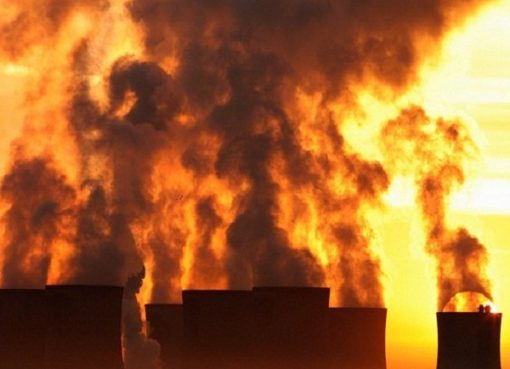Over the past few weeks there have been many reports of localized air quality improvements as the world has locked down to combat the coronavirus pandemic. However, no one should think that the climate crisis is therefore over—far from it.
The most recent data from the United States National Oceanic and Atmospheric Association (NOAA) shows global carbon dioxide (CO2) levels rising sharply.
In April 2020 the average concentration of CO2 in the atmosphere was416.21 parts per million (ppm), the highest since measurements began in Hawaii in 1958.
Furthermore, ice core records indicate that such levels have not been seen in the last 800,000 years.
The United Nations Environment Programme’s (UNEP) World Environment Situation Room shows a sharp increase in CO2 concentrations of more than 100 ppm since March 1958.
The curve shows expected seasonal fluctuations: the northern hemisphere has a greater land mass than the southern hemisphere and more vegetation-absorbing CO2 during the summer. Global CO2 concentrations peak in May at the end of the northern hemisphere winter. Then, as photosynthesis takes place and new foliage appears, it absorbs CO2, lowering concentrations by about 7.5 ppm until October. During the northern hemisphere winter, the Earth has less photosynthesis activity, so CO2 concentrations go up until the next cycle.

However, owing to anthropogenic CO2 emissions (emissions from human activities), CO2 concentrations are not only increasing, but accelerating.
The following graph shows the difference in CO2 concentrations between one month and the same month one year before (e.g. + 2.88 ppm between April 2020 and April 2019). It shows that while the increase over one year was around 0.9 ppm during the 1960s it rose to 2.4 ppm on average during the 2010-2019 period. There is a clearly accelerating upward trend.

The long-term view
Using ice-core records, it is possible to measure CO2 trapped in deep Antarctic ice going back 800,000s years. We have never in the last 800,000 years reached 416 ppm.
Given that the Homo sapiens appeared about 300,000 years ago, and the first trace of Homo sapiens sapiens (also called anatomically modern humans) dates to 196,000 years ago, no individual of our species has experienced such high levels of CO2.
“This is, of course, of great concern for our climate, and demonstrates, yet again, that urgent action is needed to reduce our greenhouse gas emissions. To keep average global warming to 1.5°C we need to achieve net zero emissions by 2040 (2055 at the latest),” says Pascal Peduzzi, Director of UNEP/GRID-Geneva and Programme Manager of the World Environment Situation Room.

These results may come as a surprise to those who optimistically assume that COVID-19 will reduce total global emissions.
While it is true that vehicular and air traffic, as well as industrial activity, has reduced sharply in most parts of the world since January 2020, this is not the case with our electricity supply: 64 per cent of the global electricity energy mix comes from fossil fuels (coal: 38 per cent, gas: 23 per cent, oil: 3 per cent), according to the World Energy Outlook 2019. Heating systems have been functioning as before COVID-19. None of the fundamentals have changed (such as the shift to renewable energy, public transport, deforestation).
Forest fires and wildfires that are increasing in likelihood and severity due to climate change continue to affect swathes of Brazil, Honduras, Myanmar, Thailand, and Venezuela, each fire emitting large amounts of additional CO2.
“Without fundamental shifts in global energy production, we should have no reason to expect a lasting reduction in emissions,” says UNEP climate change expert Niklas Hagelberg.
“Supporting fiscal stimulus and finance packages to take advantage of decarbonization and the accelerating renewable and clean energy transition will not be just a short-term economic win but a win for future resilience too,” he adds.
Source:










